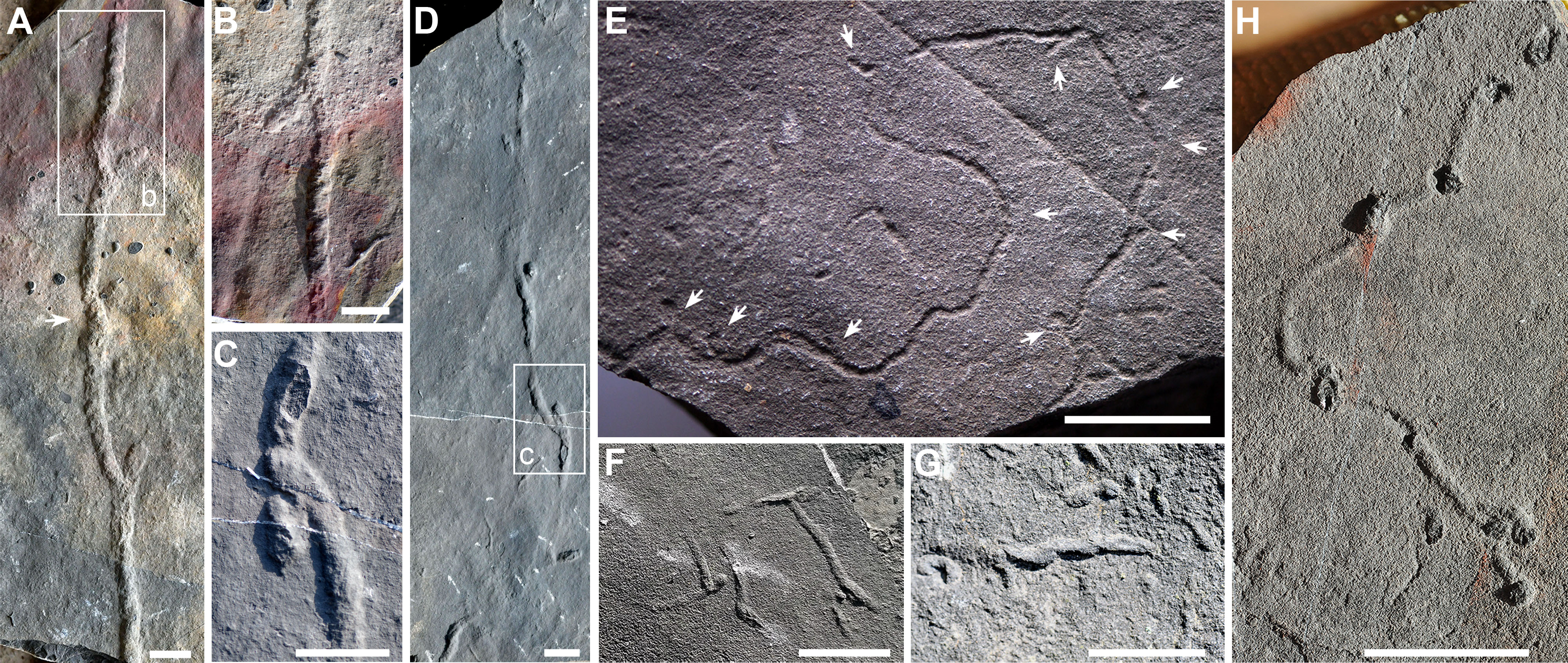550-million-year-old fossils show prehistoric lives’ 3D digging behavior
2025-11-04 20:11:05
By Chen Zai
A paleontology research team from a Nanjing institute recently found 550-million-year-old fossils containing complex three-dimensional burrow systems in the Shibantan Biota in Yichang. Published in the journal of Science Advances, these trace fossils show that complex animal behaviors were modifying the seafloor environment nearly 10 million years earlier than previously thought.

Three-dimensional burrow systems are networks of cavities in seafloor sediments created by animal behaviors like drilling and excavating, said the team from the Nanjing Institute of Geology and Paleontology of the Chinese Academy of Sciences. Unlike surface trails, these systems indicate a shift of animal exploration from two-dimensional to three-dimensional activities, significantly impacting seafloor ecology, material cycling, and evolutionary processes.
The study, done on trace fossils preserved in the Shibantan Biota (approximately 550–543 million years old), indicates diverse and advanced burrowing behaviors like vertical foraging activities by late Ediacaran animals. Crucially, such behaviors may have permanently altered marine substrate structures and driven the transformation from the Ediacaran to the Cambrian period.
According to the institute’s website, the Ediacaran–Cambrian transition, around 539 million years ago, marks one of the most significant ecosystem revolutions in Earth's history. A key driver of this ecological shift was the transition of metazoan behavior from simple two-dimensional surface activities to three-dimensional exploration deep into sediments.
A paleontology research team from a Nanjing institute recently found 550-million-year-old fossils containing complex three-dimensional burrow systems in the Shibantan Biota in Yichang. Published in the journal of Science Advances, these trace fossils show that complex animal behaviors were modifying the seafloor environment nearly 10 million years earlier than previously thought.

Fossils preserved in the Shibantan Biota indicate diverse and advanced burrowing behaviors like vertical foraging activities by late Ediacaran lives.
Image by Nanjing Institute of Geology and Paleontology of the Chinese Academy of Sciences
Image by Nanjing Institute of Geology and Paleontology of the Chinese Academy of Sciences
Three-dimensional burrow systems are networks of cavities in seafloor sediments created by animal behaviors like drilling and excavating, said the team from the Nanjing Institute of Geology and Paleontology of the Chinese Academy of Sciences. Unlike surface trails, these systems indicate a shift of animal exploration from two-dimensional to three-dimensional activities, significantly impacting seafloor ecology, material cycling, and evolutionary processes.
The study, done on trace fossils preserved in the Shibantan Biota (approximately 550–543 million years old), indicates diverse and advanced burrowing behaviors like vertical foraging activities by late Ediacaran animals. Crucially, such behaviors may have permanently altered marine substrate structures and driven the transformation from the Ediacaran to the Cambrian period.
According to the institute’s website, the Ediacaran–Cambrian transition, around 539 million years ago, marks one of the most significant ecosystem revolutions in Earth's history. A key driver of this ecological shift was the transition of metazoan behavior from simple two-dimensional surface activities to three-dimensional exploration deep into sediments.






